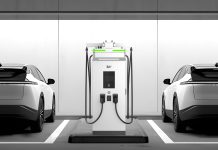A rechargeable generator is a portable device that produces usable electricity from stored energy. It is the perfect option for small appliances or electronic devices powering in remote locations with limited access to electricity. The various states and operations of rechargeable generators will be covered in this article. Several websites sell rechargeable solar generators online; you can visit a reliable one and order one yourself.
The Three States of Rechargeable Generators
Rechargeable generators have three operating modes: standby, discharge, and recharge. These states determine the generator’s operation, including how it stores and transforms energy.
Standby State
The generator is not actively powering any equipment when it is in standby mode. As an alternative, it is awaiting use. The inverter and charge controller are keeping an eye on the system while the generator’s battery is fully charged.
Discharge State
The generator supplies power to gadgets in the discharge state. The energy that the inverter transforms into AC power comes from the battery. The charge controller controls the power output, ensuring a steady electricity supply to the devices. The battery gradually loses power as the generator continues to run.
Recharge State
The generator is being charged while it is in the recharge state. This happens when the generator is connected to a power source, like a wall outlet or a solar panel. Energy is stored in the battery, and the inverter and charge controller controls the charging process to guarantee a secure and reliable charge.
Rechargeable generators function by converting stored energy into usable electricity in a battery. Together, the generator’s parts form a functioning system.
Rechargeable Generator Components
Battery
The generator’s beating heart is the battery. It keeps the power the generator will produce in reserve. How much energy the generator can store and how long it can run depends on the battery’s capacity. Rechargeable generators frequently use lithium-ion batteries because of their high energy density and long lifespan.
Inverter
The inverter transforms the DC power that is kept in the battery into usable AC power for devices. It is regulated to ensure the devices’ power output is stable and secure. Some generators have multiple outlets with various power outputs, enabling users to select the outlet that will work best with their devices.
Charge Controller
In order to ensure that the battery is charged safely and effectively, the charge controller regulates the charging procedure. It keeps track of the battery’s level of charge and modifies the charging speed as necessary. The charge controller also shields the battery from overcharging, which shortens the battery’s life and damages it.
AC Outlets
AC outlets give devices the usual household power. They are perfect for running high energy-demanding equipment like power tools or appliances.
USB Ports
Devices that charge via USB, like smartphones and tablets, are powered by USB ports. They can also power smaller electronics like fans or LED lights.
Conclusion
Rechargeable generators are a practical and portable option for supplying power to equipment in remote locations or during blackouts. For the generator to be used correctly and effectively, it is imperative to comprehend the various states of the generator and its components. A rechargeable generator can supply the power you need to keep your devices running, whether camping, working on a construction site, or experiencing a power outage.













